The Victorian period started in 1837 and ended in 1901 upon the death of Queen Victoria. Victorian fashion, roughly from the 1830s to the 1890s, is of great interest due to the trending fashion and styles in this period. The Victorian people were fashion cautious. At that time, a person was judged at first sight by the dress he wore. Social stratification was highly distinct, and the dresses of upper and lower-class people were different. Due to advancements in technology and the textile industry, this era experienced fashion that would change over the decades. Victorian shoes were no exception.
Victorian Shoes
In the Victorian era, shoes were considered an essential part of completing any outfit. For the first time in history, people started to make shoes considering the anatomy of the feet. So the shoes were more comfortable than ever. Making different shoes for right and left feet was only seen in this era. Shoes made of silk were also found. Later leather replaced silk. Fur-trimmed low ankle boots were highly popular in this era. These boots had very comfortable kitten heels. In this era, high-heeled shoes were liked by both men and women. People could order specially designed shoes for them. Mass production of footwear began in the 1850s. A brief description of Victorian footwear has been included here.
Looking for a pair of Victorian shoes for you? Check here!
Victorian Men’s Shoes
During the initial period of this era, Victorian men’s shoes had mainly two types. The dress shoe was light and had a low heel with a low front. The second type of shoe had latchets and lacing over the front. These shoes were also low-heeled, but they were highly stylish. Initially, the boots and shoes were square-toed. In the 1860s, they became wider, and the toe became a little round. Finally, in the 1880s, they became pointed. The shape of the women’s boots and shoes also changed correspondingly. Boots were the usual footwear until the end of the century. Knee-length stockings and later shorter stockings were also worn with shoes. They were made of silk, wool, or cotton and would be black, white, speckled, or striped.
High boots or Hessians
These boots reached just below the knee and had a curved top. Wellingtons were similar to Hessians but had a plain top. These boots were used for walking, but after 1850 they were only used for riding.
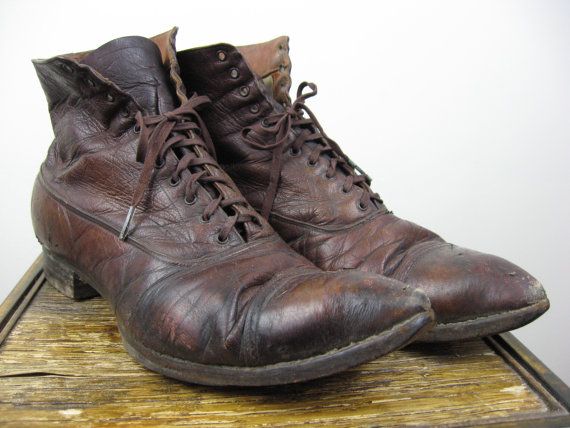
Blucher
Blucher was the half-boot form. It was half the length of a Wellington and had front lacing. It was the most common half-boot for men. It was more used for walking than half-boots.
During the initial period of this era, men also wore boots that had elastic gussets at the side. The boots also had leather toes and cloth tops with side lacing. The design of these boots was somewhat similar to women’s boots. After 1850 these boots went out of fashion, but the elastic-sided boots were worn till the end of the century.
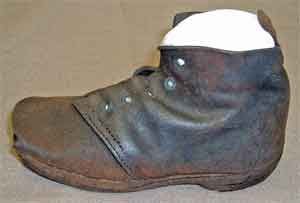
Button boots
These boots came into fashion in the late 1830s, but they became standard footwear in the 1860s. In the 1870s and 1880s, button boots were trendy among the Victorian men. At this time, metal hooks were used in the front lacing boots to hold the laces instead of using holes at the top. However, the boots were the usual footwear until the end of the century.
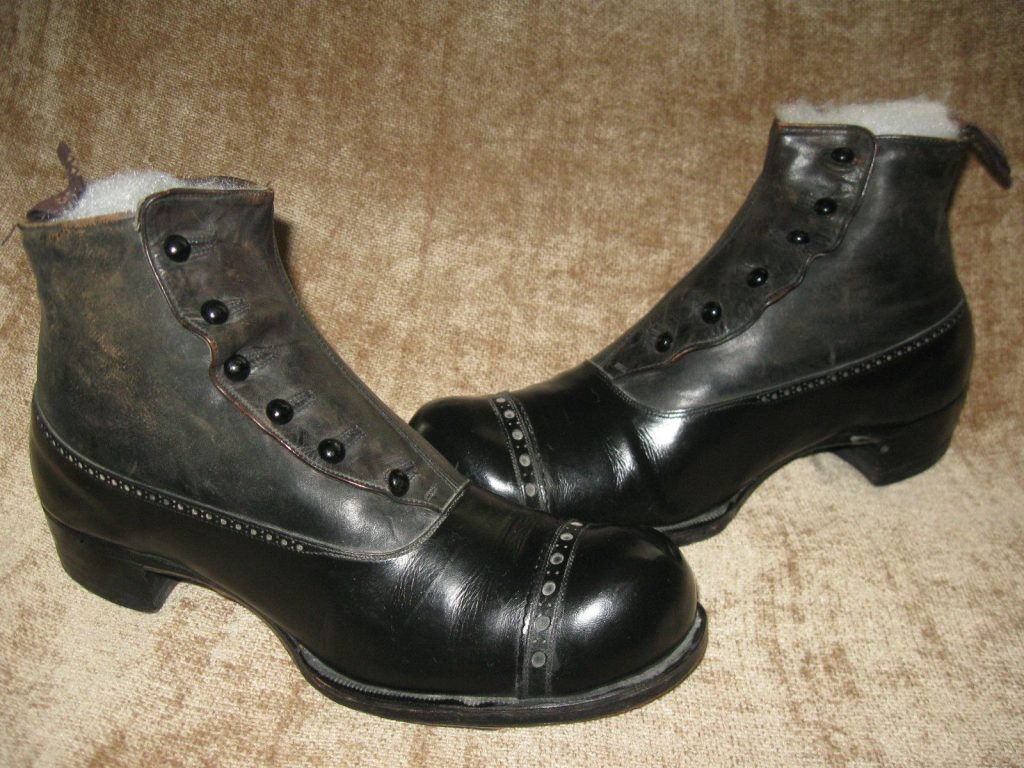
Victorian Women’s Shoes
In the Victorian era, it was an inappropriate gesture for Victorian women to show their feet. They wore shoes to cover the feet below the long skirt. Victorian women tended to match the shoe with the dress worn. Not everyone could afford multiple pairs of shoes. Moreover, the long dress worn by Victorian women often covered the shoes, and so the demand for a variety of shoes was less. Shoes were considered a luxury. Only the upper-class women had different pairs of shoes matching their dresses. Victorian shoes were often decorated with embroidery, beads, laces, rhinestones or pearls. Victorian women’s shoes had roughly three styles- boot, clog, and dress slipper. Women used to wear boots to work. It was made of hard leather. Clog and dress slippers were worn on special occasions.
Clog dancing was viral in the Victorian era. In this dance form, the dancer needs control over his or her feet movements. Hence clog shoes were developed. It was made of leather, but the sole was usually made of alder or sycamore. These shoes remained in fashion till the 1920s.
High, black lace-up Victorian boots were a popular fashion of the Victorian era. These boots became so popular at that time that they were worn till the 1950s. They were known by various names such as granny boots, Lolita boots, Old West boots, or witch’s boots. In the late Victorian era, the lace-up boots were highly replaced by button-up boots and low heel Oxford shoes. Women wore boots as daytime footwear and slippers as evening footwear.
Shoes were started to be made by machines in the 1850s. As a result, variations in footwear were possible to make. Moreover, the Bustle dress allowed women to reveal more of their feet. So the shoes were getting more fanciful.
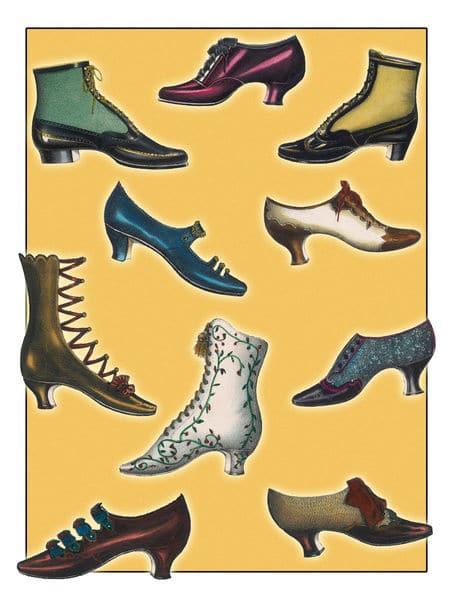
Victorian Children’s Shoes
Usually, there was no separate shoe fashion for Victorian children. They wore the miniature version of the adult shoes. Gaiter boots were popular as children’s footwear.
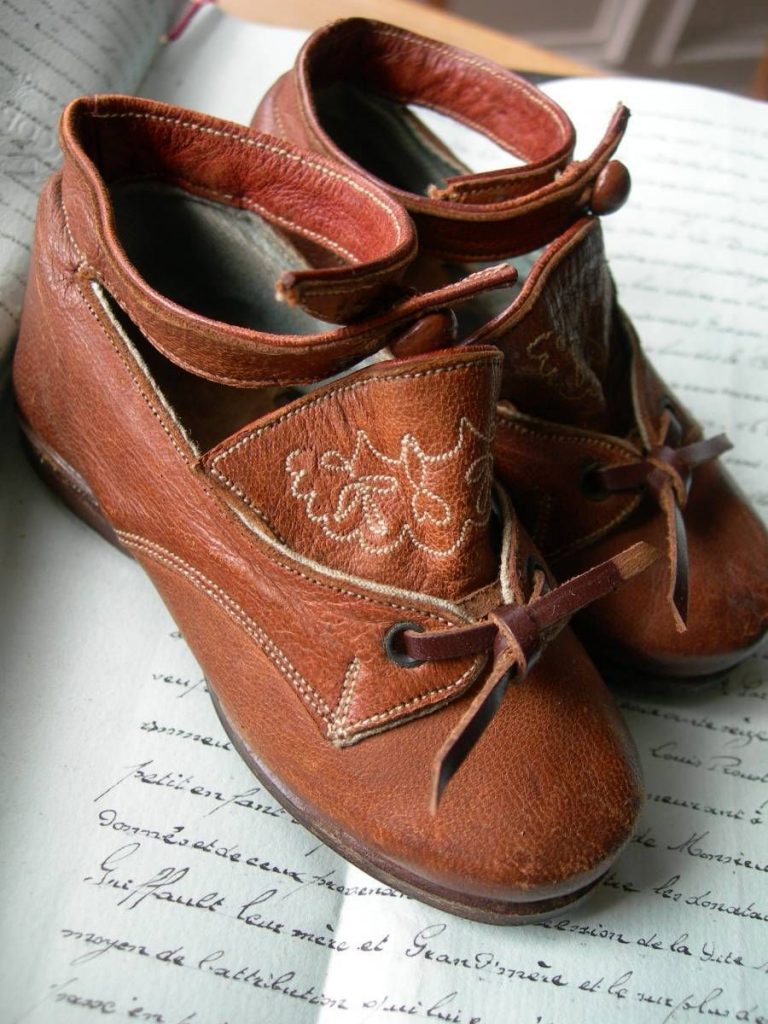
Conclusion
Like any other garment, shoes were also fashionable in the Victorian era. Men’s and women’s shoes were roughly similar in types with variation in size, shape, and decoration. The Victorian boot was fashionable footwear at that time. Their popularity is still present. Today’s boots have similarities with the Victorian boots. You can always buy Victorian boots online if you want to experience the vibe of the Victorian era.

